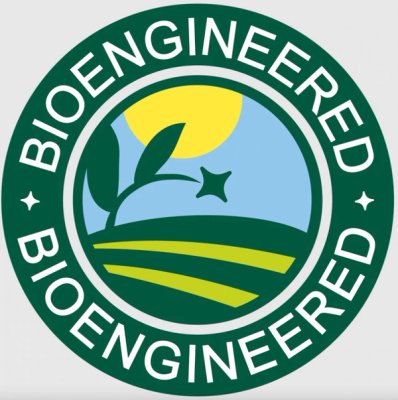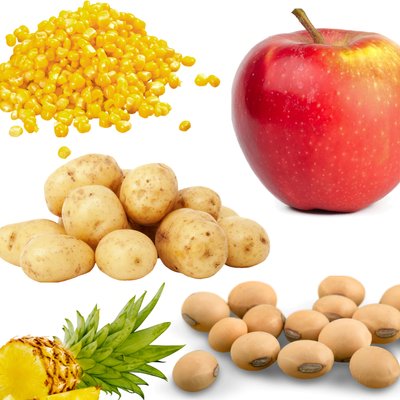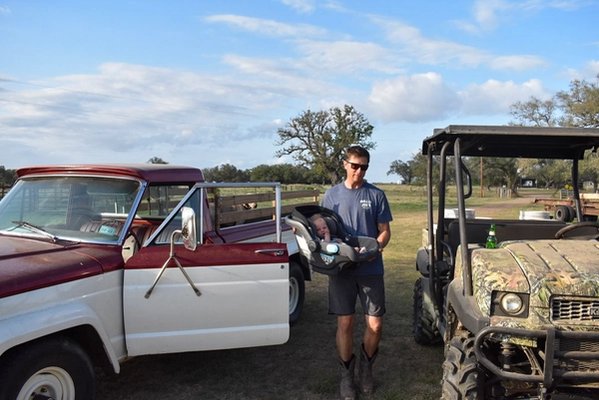Cruising the grocery store aisles it's no secret that more and more foods are beginning to have some sort of deceiving green label or marketing claim like "fresh”, “natural”, or “grassfed". As of January of this year, another one has been added to the list - Bioengineered. So what is this new “Bioengineered” label claim and what does it mean for the consumer? First a little history on how we got here: "In 2016, Congress passed a law to establish a national benchmark for the labeling of genetically modified food in an attempt to give people more information about what they eat and standardize labels across the country." After congress passed the law stating GMO foods must be labeled, the USDA (after being thoroughly lobbied) changed the name from the common, decades old and well known moniker - GMO, to "Bioengineered.

This was followed up with a colorful new label that reflects a green pasture and a bright yellow sun - a beautiful pastoral setting (pictured above). It’s easy to take a quick glance at the label and feel good about what it portrays - it looks healthy, and it looks natural. However, the USDA’s definition for the new bioengineered food label is "Food that contains genetic material that has been modified through certain laboratory techniques and for which the modification could not be obtained through conventional breeding or found in nature."

Confused about GMO's or Bioengineered? To keep it simple, they are crops that have been genetically modified (hence GMO) to withstand certain pesticides or herbicides. For example, the two most farmed crops in America, corn and soy are both GMO crops. These crops are often able to withstand herbicides (or weed killers) like glyphosate (Round Up). One of the purposes of GMO crops is to increase crop yields - the whole corn field can be sprayed with chemical herbicide - and everything dies except the corn because the corn has been genetically modified to withstand herbicide. And that corn eventually ends up in the food we (or livestock) eats.

So back on track, Congress decided GMO's needed to be labeled. The USDA changed the name to Bioengineered, so bioengineered is the label you may (key word may, keep reading) be seeing in grocery stores. Here is a list of Bioengineered/GMO Crops Alfalfa Apple Canola Corn Cotton Eggplant Papaya Pineapple Potato Salmon Soybean Squash Sugarbeet

However, if you think every product in the grocery store that has bioengineered ingredients in it will be labeled as Bioengineered, you would be mistaken. Going forward, GMO (now bioengineered) food items only require the label if they are the main or first ingredient listed. For example, a can of GMO (now bioengineered) corn will require the GMO (now bioengineered) label. A prepackaged meal that has corn listed as the first ingredient (ingredients listing on packaged goods are listed in order of ingredients that have the most of one item first) will have the GMO (now bioengineered) label. A frozen vegetable medley that has more GMO (now bioengineered) corn than other vegetables, (as it’s listed first in the ingredients) will require the label. On the other hand, a vegetable medley that has carrots listed as the first ingredient, followed by corn in second place - will not require the GMO label.

It's easy to think that all processed package goods will have the GMO label because corn syrup and various oils are in so many items. This is not the case due to the fact that these items (oils and sugars) are highly refined, which is another exemption from the labeling requirements. Meat, poultry, and eggs that came from livestock that was fed GMO corn and soy is also exempt from the Bioengineenered label.

Moral of the story? If avoiding GMO's is important to you, look for the Non-GMO butterfly label instead of assuming. Just because the GMO (Bioengineered) label is absent from the package does NOT mean that the food item doesn't contain GMO's. Unfortunately, it isn't black and white when it comes to the GMO label, and the burden is again put on the consumer to research, ask questions and verify the story behind the food they’re buying. "The majority of consumers concerned about GMOs seek to avoid them, not find products that contain them. The Bioengineered Food labeling law is ineffective at finding GMOs and avoiding GMOs, largely because of restrictions, loopholes and exemptions. Too much falls outside of the law’s purview for it to be effective. That’s why the Butterfly remains the most rigorous, transparent and trustworthy label for GMO avoidance."
Sources: NPR Non-GMO Project


Leave a comment